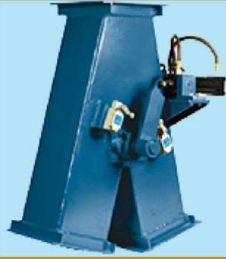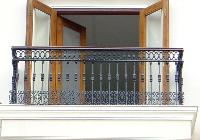
Automatic Boom Barrier Gate
Get Price Quote

Rfid gate
1,799 Per Piece
Best Deals from Fencing Hardware

Flap Gate
Get Price Quote

mild steel grills
Get Price Quote
Ours is a well-recognized firm based in (India) and appreciated for offering qualitative products and that too at the best market prices. Our storage facility is installed with all necessary amenities essential for the secure storage of the products. Also, we maintain complete hygiene inside the unit. Our galvanized Mild Steel Grills are anti-corrosive, long durable and have high surface finishing.

Galvanised Concertina Coil Wire
Get Price Quote

Barbed Wire Fencing
Get Price Quote
Vishwa Solar Solutions offer wide variety of fencing solutions including Barbed Wire fencing, barbed wire fencing consists of two strands of wire which are twisted together with barbs placed at regular distances.

Solar Fencing System
Get Price Quote
Solar Fencing System, automatic door entry system, SPRINKLER SYSTEM

Solar Fencing
Get Price Quote
Solar Fencing, automatic door entry systems, fire hydrants system

Precast Fencing Poles
Get Price Quote

Ss316 grade steel grill
220 - 250 Per SFT
Ss316 grade steel grill, invisible grill, Pleated Mosqito mesh

Solar Fencing System
Get Price Quote
Solar Fencing System, cryogenic liquid oxygen plant, Hdpe Safety Helmet

solar security fencing
Get Price Quote
solar security fencing, Solar Water Heating Systems, Solar Lanterns

Galvanized Barbed Wire
Get Price Quote
Galvanized Barbed Wire, tiles contractors, Plumbing Contractors

balcony grill
Get Price Quote
balcony grill, Gates, portable shed, Rolling Shutters

Solar Power Fencing
Get Price Quote
Solar Power Fencing, Solar Home Systems, Solar Lanterns, Solar Street Light

remote control gates
Get Price Quote
remote control gates, Bitumen, Intrusion Alarm System, IP Cameras

Rcc Fencing Poles
190 - 750 Per No
Building Materials, CEMENT PIPES RCC, RCC Spun Pipes, pipes & fittings

Solar Fencing
Get Price Quote
Solar Fencing, solar panal, Solar Lanterns, Solar Home Lighting Systems

Aluminium Wire Mesh
Get Price Quote
Aluminium Wire Mesh, Galvanizing Services

Blades
Get Price Quote
Blades, Diamond Segments, Diamond Tools, edge cutting blades

Stainless Steel Grill
Get Price Quote
Stainless Steel Grill, Stainless Steel Railing, Stainless Steel Glass Railing

Barbed Wire
Get Price Quote
Barbed Wire, Wire Products

Solar Fencing
Get Price Quote
Solar Fencing, SOLAR PANELS, solar photovoltaic rooftop, Solar Street Light

Gates
Get Price Quote
Gates, Rolling Shutters

SS Balcony Grill
Get Price Quote
SS Balcony Grill, Metal Barricade, Balcony Grill Fabrication

Gates
Get Price Quote
Gates, Doors, Aluminum Bathroom Door, Revolving Doors, oak door